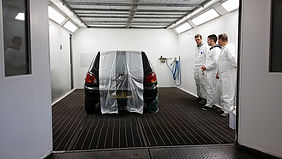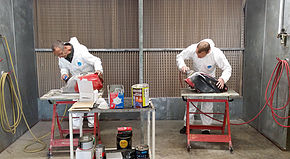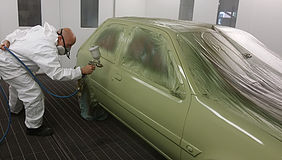I will take you through the assessment process. You will be taught how to price, calculate a realistic timescale and most of all to understand that it is not the size of the damage, but how that particular damage affects the next stages of the job.
During this day you will be taught and practiced on various methods on repairing dents.
- Filler work, filling and skimming.
- Panel beating
- Spot Welding and slide hammer
You'll never really get two repairs in the same place on the same vehicle so its important to have a broader understanding of repair work rather than having the one method for all, as what works for one may not work for the other. You will be given either a car wing or motorcycle tank depending on your course. This is what you will repair and end up putting a full paint job on.



